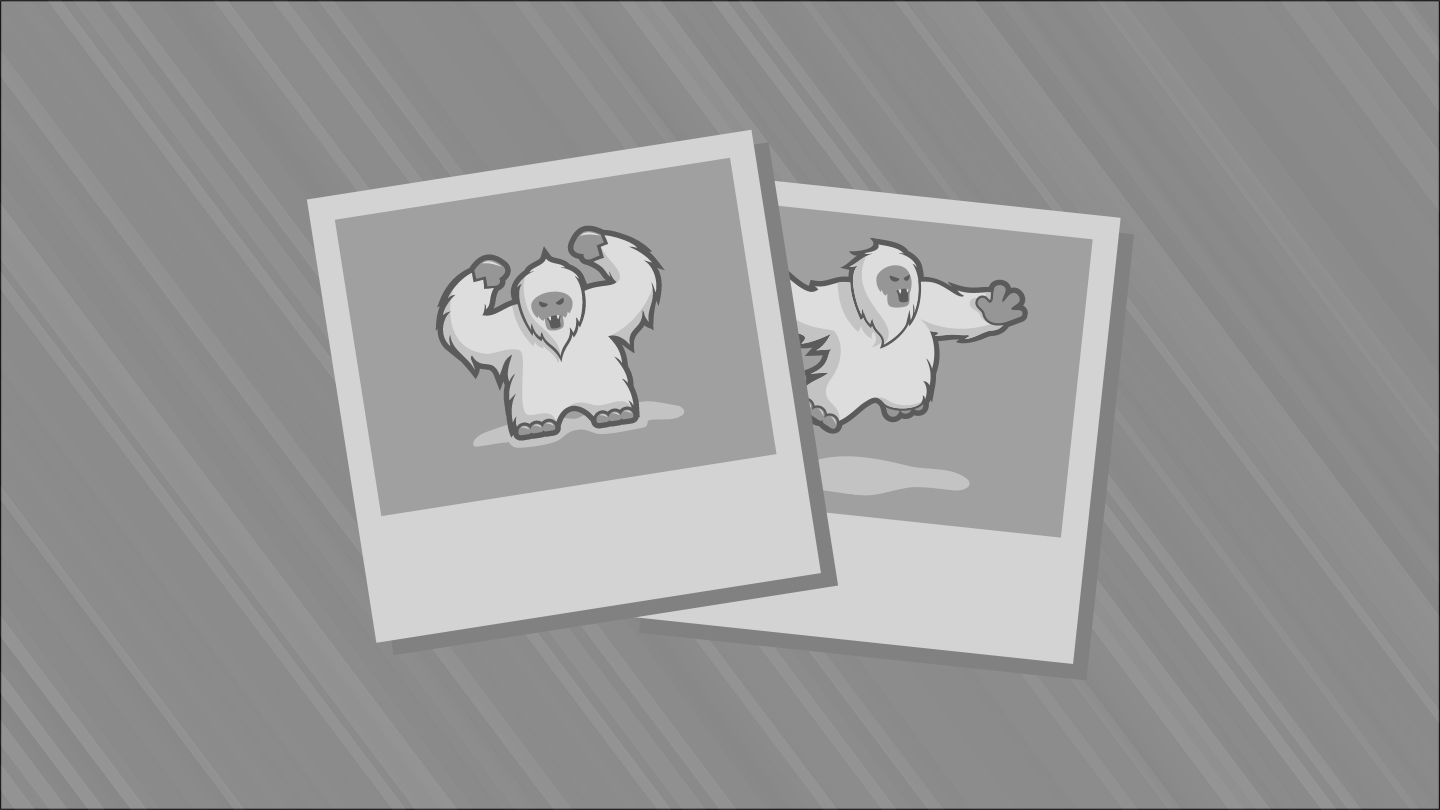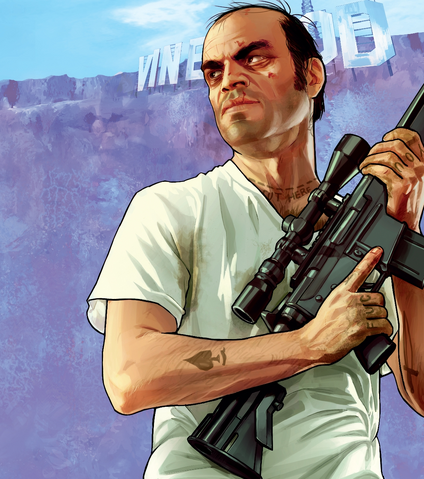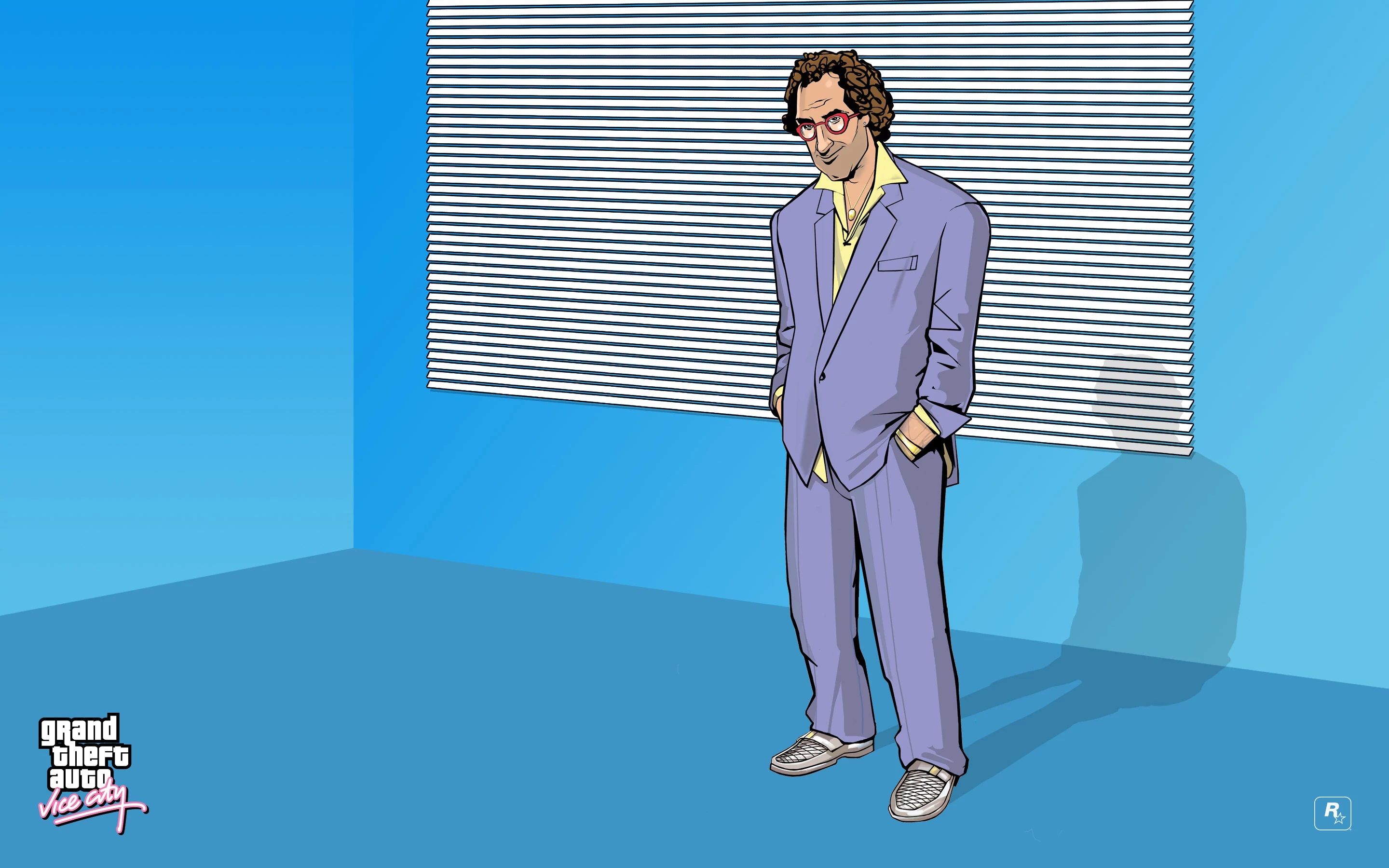 GTA V, actually the fifteenth game in the long running series, is the first title in Rockstar's favourite franchise to feature not one, not two but three playable characters. Michael is a retired bank robber who faked his own death and now lives out an unhappy existence in Los Santos, the largest city in the game's fictional state of San Andreas, with a huge house and a family that hates him. It's not long before he meets Franklin, a young thug in a Los Santos gang who inspires to be a big time criminal. Together they plan a major heist to pay off Michael's debts and create a little spending money, before making contact with the game's third protagonist Trevor, an psychopathic ex-associate of Michael's who runs a meth production business from his hillbilly home in Sandy Shores, a small town in the north of San Andreas. While each of these characters sound like predictable clichés in a crime movie, the player spends enough time with them to explore their dark personalities and develop their feelings for them. By the game's conclusion we care about Michael, Franklin and Trevor more than any characters in past GTA games, a quite staggering achievement. To deal with the use of three protagonists, Rockstar have employed a superb character switching system that allows the player to change character at will while free roaming or at certain points during missions. Like Max Payne's bullet time mechanic, what might have ended up as a useless gimmick is actually a great system that becomes vital to progressing in the story. Questions have been raised as to the lack of female protagonist and I'd like to see this happen in a future GTA game, but to be honest the three characters the developers have given life to are so interesting and well developed that this minor sexist flaw can be easily ignored.
GTA V, actually the fifteenth game in the long running series, is the first title in Rockstar's favourite franchise to feature not one, not two but three playable characters. Michael is a retired bank robber who faked his own death and now lives out an unhappy existence in Los Santos, the largest city in the game's fictional state of San Andreas, with a huge house and a family that hates him. It's not long before he meets Franklin, a young thug in a Los Santos gang who inspires to be a big time criminal. Together they plan a major heist to pay off Michael's debts and create a little spending money, before making contact with the game's third protagonist Trevor, an psychopathic ex-associate of Michael's who runs a meth production business from his hillbilly home in Sandy Shores, a small town in the north of San Andreas. While each of these characters sound like predictable clichés in a crime movie, the player spends enough time with them to explore their dark personalities and develop their feelings for them. By the game's conclusion we care about Michael, Franklin and Trevor more than any characters in past GTA games, a quite staggering achievement. To deal with the use of three protagonists, Rockstar have employed a superb character switching system that allows the player to change character at will while free roaming or at certain points during missions. Like Max Payne's bullet time mechanic, what might have ended up as a useless gimmick is actually a great system that becomes vital to progressing in the story. Questions have been raised as to the lack of female protagonist and I'd like to see this happen in a future GTA game, but to be honest the three characters the developers have given life to are so interesting and well developed that this minor sexist flaw can be easily ignored. It's not so easy to see past the blatant sexism that riddles the entire campaign, from the ever present prostitutes to the violent mick taking on feminism. GTA games have flirted with controversy in the past, and sexism isn't the only thing that will cause anger against GTA V. A mission which forces the player to partake in torture is particular shocking and will doubtless cause anger in the wider community, and of course there's the usual suspects of drugs and violence at work too. Still, if you can ignore these issues you'll realise that GTA V is simply a deliriously fun game to play and it's really not worth reading too much into these problems.
Every aspect of gameplay has been redesigned since GTA IV, from the basic game mechanics up. Shooting and driving have been noticeably improved, with a superb cover system and more realistic guns combining with more fluid steering to make simply driving or walking around considerably more realistic and enjoyable. There's not a whiff of the "drive here, kill someone, drive back" mission structure that haunted previous GTA's; the missions of GTA V are cinematic, multi structured affairs which stand up to any Hollywood blockbuster set piece. One mission that really illustrates this from early on in the game's narrative involves the long running feud between Trevor and biker gang The Lost (previously featured in the GTA IV expansion The Lost and Damned). Playing as Trevor, I used a high powered sniper rifle to pick off bike guards while my friend Ron planted explosives in the gang's hideout. When Ron ran into trouble, I leaped onto a quad bike and raced into the fray. An exhilarating shoot out followed, culminating in the two of us escaping into the air in stunt planes as the base exploded below us, the mission finishing as I raced Ron back to our airstrip. And there are tens of missions like it over the course of the main story (not to mention the myriad of side quests available), perfectly conveying just how much the mission design of GTA has improved since the game's humble beginnings in 1997. The missions are based around six major heists, multi-storied jobs requiring thought, decision making and many preliminary tasks before they can be executed. These heists are brilliantly structured and really feel like they've been pulled out of action movies, expertly mixing planning and tension with stunning levels of violence culminating in a huge payoff if competed correctly. Heists also add a little player freedom to the mix by allowing you to choose between two methods of robbery for each job and also letting you pick your own crew. A massively improved stealth system also means that there are often two ways of tackling each mission.
And I've said all this practically without mentioning the beautiful world the game is set in. While GTA San Andreas was set in a similar location and featured locations found in GTA V including Los Santos, Blaine County and the towering Mount Chiliad, the latest instalment takes it to a new level. The map is not only huge but it's dense too, and full of things to do. The level of detail put in by the stellar team at Rockstar North is nothing short of incredible, and it's remarkable that every area of such a massive world feels different. From the posters on the walls of Franklin's house to the stunning view at the summit of Mount Chiliad to the many in-references to past GTA games, this is possibly the greatest game world ever created, reminding me more of the intricate detail of Arkham City (not in size) than the empty expanses of Just Cause 2's Panau. And the team have clearly spent a lot of time adding things to do, from side quests and collectables to surprisingly excellent tennis and golf games to base jumping, flying, racing and hunting, the wealth of mini-activities is simply awesome. And of course, just exploring the enormous open world taking in the scenery (and maybe causing a little mayhem in the process) is fantastic fun too. The game plays extremely well too; the frame rate is high and consistent; the draw distance is remarkable and bugs are practically non-existent, a remarkable feat considering it's running on eight year old hardware. And as ever it's backed up by a brilliant soundtrack that, for the first time, not only features hours of real music but also a dynamic score that plays when the character is not in a car. There's a great range of songs from artists as varied as Britney Spears and Black Flag, and while it's not quite as inspired in it's look at contemporary music as Vice City was to the eighties, it's still full of spine-tingling moments. The game is also drenched with biting satire in it's story and on the radio, parodying topics including America's love affair with firearms, the financial crisis and even modern video games.
We'd waited so long for GTA V that anything other than a near perfect game was going to be a disappointment, but fortunately for us the team from Rockstar North have truly delivered this time around. GTA V feels like a culmination of all Rockstar's previous work, and while a game like The Last of Us says more about humanity in a few minutes than this £175 million blockbuster manages in it's entire 70+ missions, there's no denying that GTA V is, quite simply, brilliant fun to play. And after all, that's what games are for in the first place. It's one of the greatest video games of all time.
10/10
Reviewed for Xbox 360
























